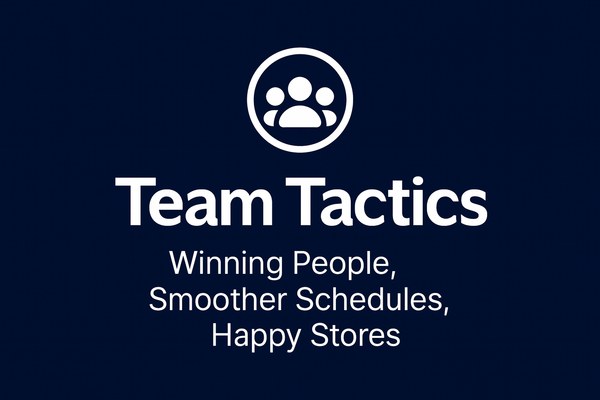How to Coach Store Managers on Loss Prevention
Loss prevention policies alone don't stop shrink. District managers must coach store managers to recognize risks, lead their teams, and hold employees accountable. Effective coaching frames shrink reduction as leadership, uses real store data, and reinforces habits during store visits.

Loss prevention is one of the toughest challenges in convenience retail. Shrink eats away at profits, frustrates managers, and creates tension across the district. For district managers, the solution is not just setting policies — it is coaching store managers to lead loss prevention efforts confidently and consistently.
Great coaching helps managers turn shrink reduction from a reactive chore into a proactive part of daily operations.
Why Coaching Matters in Loss Prevention
Policies alone do not stop shrink. Managers must be trained to recognize risks, coach their teams, and hold employees accountable. District managers who invest in coaching create leaders who prevent losses before they happen.
💭 What District Managers Are Thinking
- “Some managers hate bringing up loss prevention because it feels like they’re accusing employees.”
- “I know shrink is happening, but I don’t know if my managers can actually see it.”
- “How do I coach them without making it feel like a lecture?”
Step 1: Make Loss Prevention a Leadership Priority
Frame shrink reduction as leadership, not just control. Teach managers that protecting profits is part of running a healthy store. Connect it to success metrics they care about, like store bonuses or district rankings.
💭 “If managers don’t see the link between shrink and performance, they won’t make it a priority.”
Step 2: Use Real Numbers in Coaching
Data makes shrink real. Show managers their store’s shrink percentage compared to district averages. Use examples from their own inventory or sales data to highlight problem areas.
💭 “When managers see the numbers tied to their store, they finally realize this isn’t abstract — it’s real money.”
Step 3: Role-Play Real-World Scenarios
Coaching is stronger when it’s practical. Role-play situations like shoplifting attempts, refund scams, or cash variances. This builds confidence and prepares managers for real situations.
💭 “My managers know the rules but freeze when they actually face a tough situation.”
Step 4: Teach Managers to Coach Their Teams
Managers should not just enforce rules — they must teach employees how to prevent losses too. Give them coaching scripts for common issues like checking IDs, monitoring high-risk items, and handling cash discrepancies.
💭 “Managers ask me how to talk to their teams without sounding accusatory — they need examples, not just policies.”
Step 5: Reinforce and Follow Up
Loss prevention coaching should be ongoing. Review progress during store visits, recognize improvements, and call out recurring blind spots. Consistency builds lasting habits.
💭 “If I only bring up loss prevention when there’s a problem, managers see it as punishment, not improvement.”
The Bottom Line
District managers who coach loss prevention effectively give their store managers confidence, tools, and accountability. Instead of reacting to shrink after it hurts the P&L, they build leaders who prevent losses before they happen.





